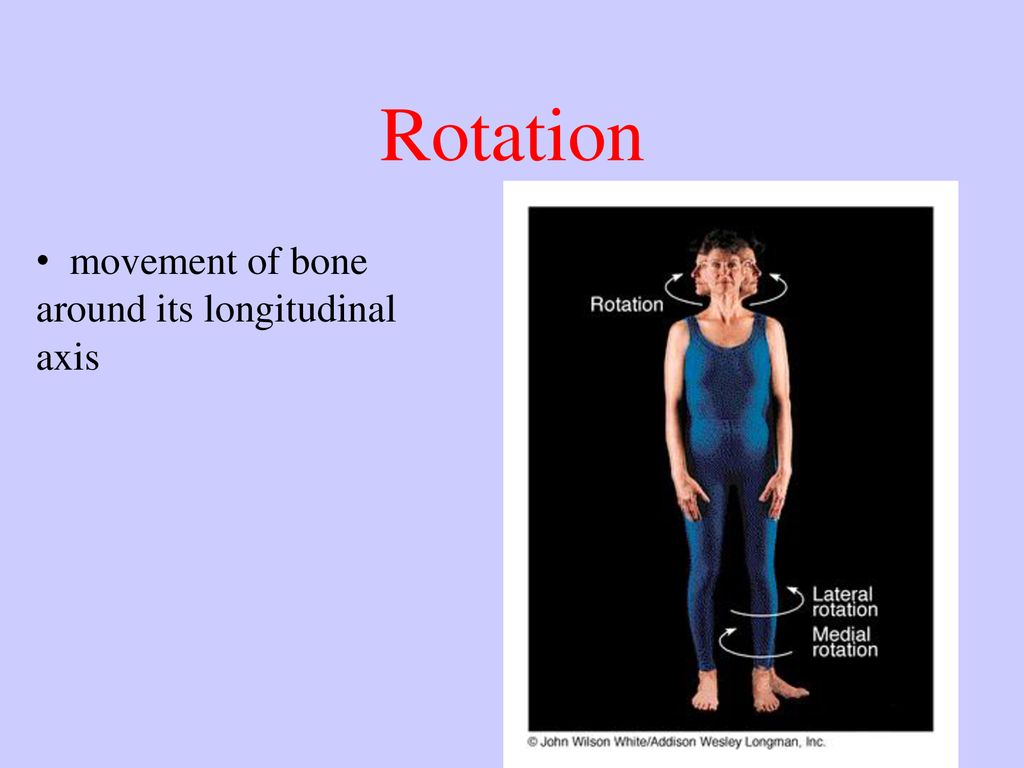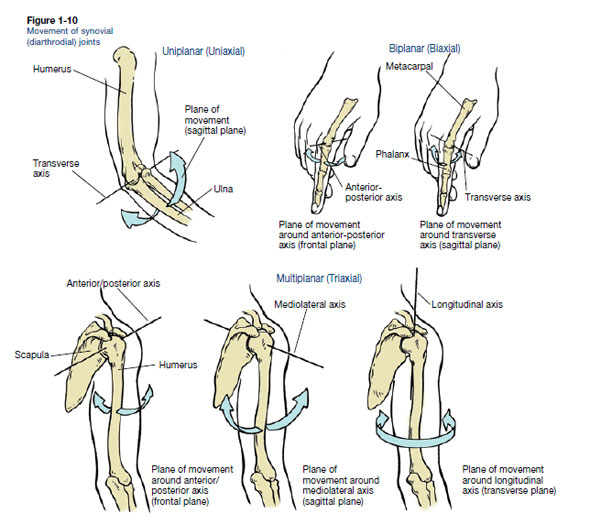Movement of a Bone Around Its Longitudinal Axis
Rotation of the forearm and hand medially so that the palm faces posteriorly Abduction. Rotation The movement of a bone around its longitudinal axis 4.
Rotation is a common movement of ball-and-socket joints and describes the movement of the atlas around the dens of the axis.

. Demonstrating Movements Allowed by Synovial Joints. Movement of a bone toward the midline of the body e. The second form is a torus or buckling fracture caused.
Rotational movement is the movement of a bone as it rotates around its own longitudinal axis. Movement of the sole of the foot laterally c. Special movements include inversion eversion protraction retraction elevation depression dorsiflexion plantar flexion supination pronation and opposition.
Chapter 6 Matching Question 15-25 rotation 1 Primary action of the rectus abdominis inversion Type of movement that points the toes 2 abduction Type of movement that allows you to carry a soup bowl 3 plantar flexion adduction 4 Type of movement that turns the sole of the foot medially supination 5 The movement of a bone around its. Rotation can be toward the midline of the body which is referred to as medial rotation or away from the midline of the body which is referred to as lateral rotation. Rotational movement is the movement of a bone as it rotates around its own longitudinal axis.
Movement of a body part away from the midline----- b. Reset Help anterior movement of a body part Flexion. Match each of the following movements with its description.
Movement of a bone around its longitudinal axis. Movement of the foot so that the toes are pulled up toward the head Protraction. Movement of a bone toward the midline of the body.
Movement of a bone around its own longitudinal axis -----d. Supination Type of movement that allows you to carry a soup bowl 5. Bones revolve around their own longitudinal axis by either o Medial rotation o Lateral rotation Special movement o Elevation o Depression o Protraction o Retraction o Inversion pinky toe to the ground o Eversion big toe to the ground o Dorsiflexion toes to the sky o Planter flexion toes to the ground o Supination palms up o Pronation palms down o.
Movement of a bone around its longitudinal axis abduction moving a limb away in the frontal plane from the median plane of the body spreading the fingers apart. Rotational movement is the movement of a bone as it rotates around its longitudinal axis. Fill in the blanks with the appropriate term----- a.
Plantar flexion Type of movement that points the toes 6. Movement of the head from side to side is an example of rotation. Movement of the sole of the foot laterally----- c.
Abduction and adduction commonly occur in ball and socket joints such as shoulder. Movement of a bone around its longitudinal axis without lateral or medial displacement. Rotation is a common movement of the ball socket joint.
Flexion Type of movement that decreases the angle of the joint 2. Adduction Primary action of the adductor muscles 3. Movement of a body part away from the midline Dorsiflexion.
Angular movements are produced when the angle between the bones of a joint changes. Rotation a common movement of ball-and-socket joints also describes the movement of the atlas around the odontoid process of the axis. CIRCUMDUCTION Is a combination of flexion extension.
Twisting a bone along its longitudinal axis toward the midline of the body is _____ Twisting a bone along its longitudinal axis away from the midline of the body is _____ Rotation of the forearm as if youre asking someone to hand you money or slap down on your hand is called _____ Rotation of the forearm as if youre turning over a can to empty it is called _____. This type of movement is common in ball-and-socket joints and can be described as the movement of a bone around its longitudinal axis. Rotation is a movement of a bone around its ROTATION Is a movement of a bone around its longitudinal axis.
Extends into the midportion of the bone and becomes oriented along the longitudinal axis of the bone without disrupting the opposite cortex. An example is shaking the head when expressing NO. Movement of a body part away from the midline b.
A combination of flexion extension abduction and adduction commonly observed in ball-and-socket joints like the shoulder. Movement of the distal end of a body part in a circle Rotation. Special movements include inversion eversion protraction retraction elevation depression dorsiflexion plantar flexion supination pronation and opposition.
Movement of a bone around its own longitudinal axis fa d.

The Muscular System Movements Ppt Download

Kinesiology Jargon Body Anatomy Kinesiology Human Anatomy And Physiology

No comments for "Movement of a Bone Around Its Longitudinal Axis"
Post a Comment